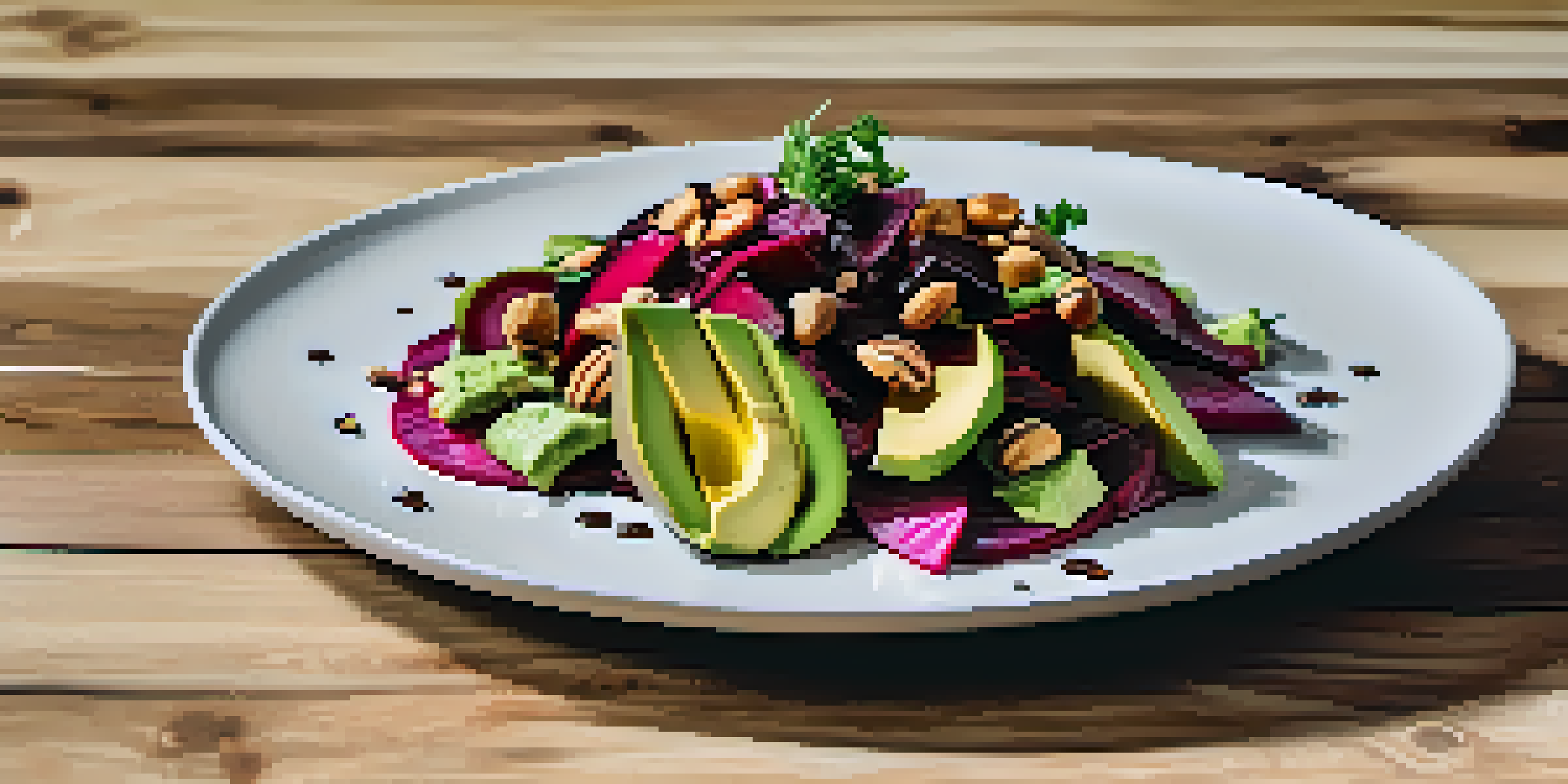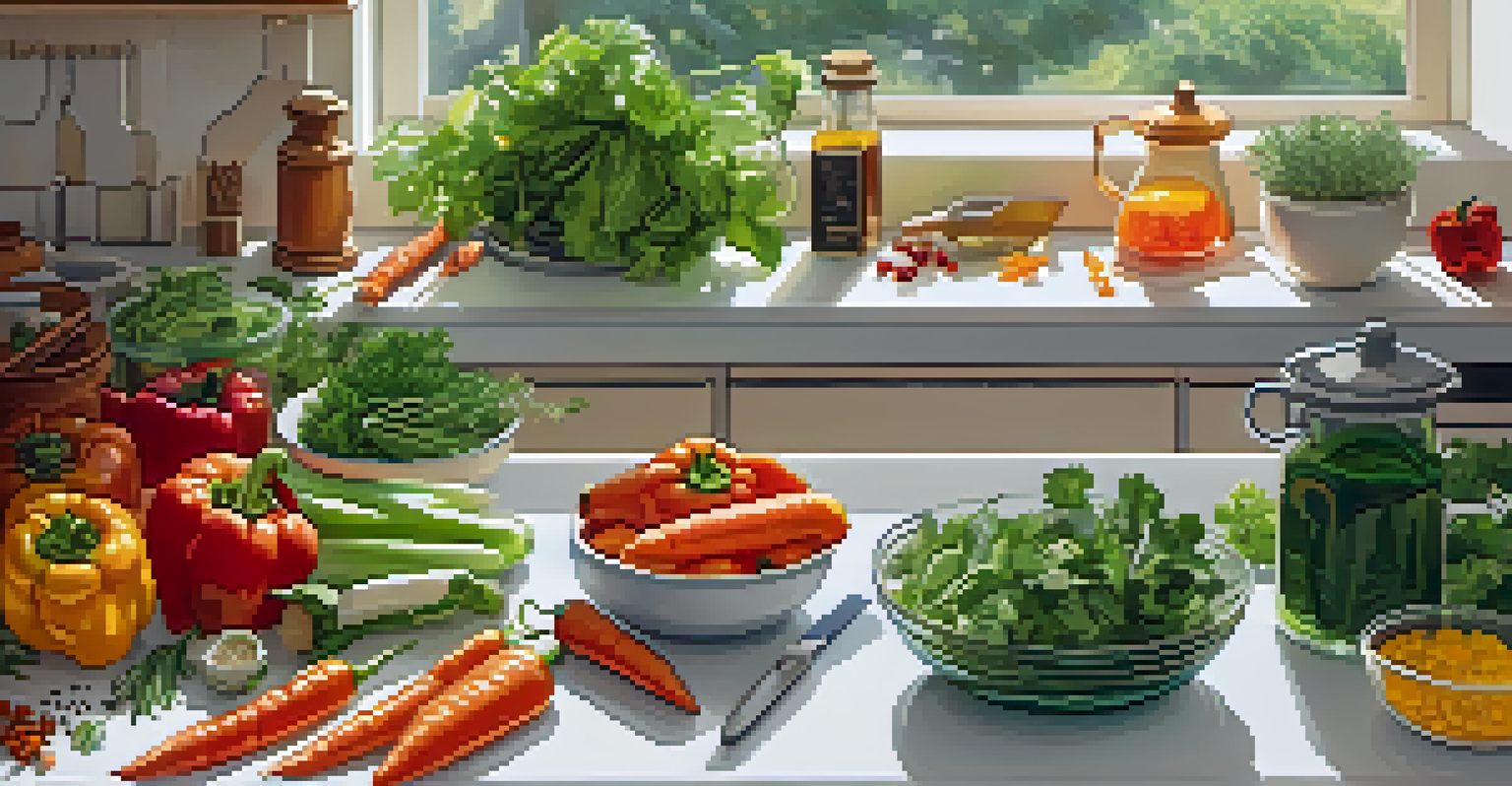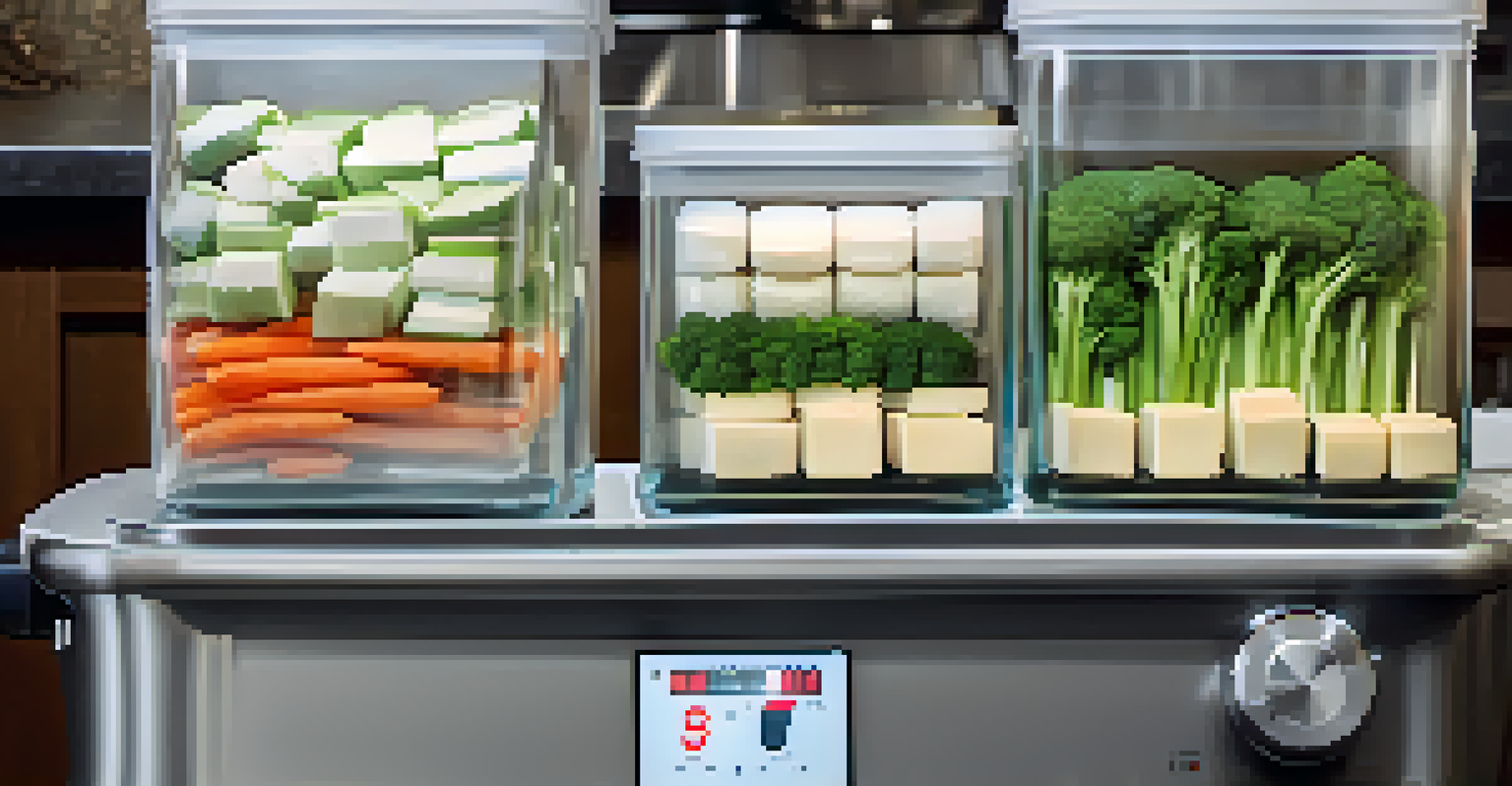Advanced Vegan Cooking Techniques to Elevate Your Skills

Understanding the Basics of Vegan Culinary Arts
Before diving into advanced techniques, it’s essential to grasp the foundational elements of vegan cooking. Familiarizing yourself with plant-based ingredients like legumes, grains, and vegetables sets the stage for creativity. Knowing how to select high-quality produce and understanding their flavors will empower your cooking.
The art of cooking is the art of discovery.
Once you understand the ingredients, mastering cooking methods such as steaming, sautéing, and roasting is crucial. Each method enhances the natural flavors of your ingredients in unique ways. For instance, roasting brings out sweetness in vegetables, while sautéing can add a delightful caramelization.
Incorporating spices and herbs is another fundamental aspect of vegan cuisine. Experimenting with different combinations can elevate a simple dish to gourmet status. By blending flavor profiles, you can create a depth that makes your dishes memorable.
Exploring Sous Vide Cooking for Precision Flavors
Sous vide cooking is an advanced technique that involves vacuum-sealing food and cooking it in a water bath at a precise temperature. This method ensures even cooking and retains moisture, which is particularly beneficial for plant-based proteins. Imagine serving a perfectly cooked tofu steak that’s tender and flavorful throughout.

Using sous vide allows for experimentation with different ingredients and cooking times, leading to unique textures and flavors. For example, you can infuse oils or marinades directly into vegetables, enhancing their taste before finishing them on a grill or in a pan. It’s a game-changer for anyone looking to refine their vegan dishes.
Master Key Vegan Cooking Techniques
Understanding foundational ingredients and cooking methods is essential for creating flavorful vegan dishes.
While sous vide equipment can seem intimidating at first, there are affordable options available that make it accessible for home cooks. With a little practice, you’ll find that this technique not only saves time but also unlocks new culinary possibilities for your vegan creations.
Fermentation: Enhancing Flavors and Nutrition
Fermentation is an ancient technique that has made a significant comeback in modern vegan cooking. Not only does it add complex flavors, but it also boosts the nutritional profile of your dishes. Foods like kimchi, sauerkraut, and miso are rich in probiotics, which can aid digestion.
Food is symbolic of love when words are inadequate.
To get started with fermentation, you don’t need to be a science whiz. Simple processes like brining vegetables in saltwater can lead to delicious results. Imagine biting into a tangy, homemade kimchi that adds a delightful crunch to your meals.
As you grow more comfortable, you can experiment with different fermentation times and ingredients. The beauty of fermentation lies in its flexibility; you can tailor it to your taste preferences. Whether it’s creating your own yogurt from nuts or crafting unique pickles, the possibilities are endless.
The Art of Plant-Based Emulsification Techniques
Emulsification may sound complex, but it’s simply the process of mixing two ingredients that normally don’t combine, like oil and vinegar. Mastering this technique can elevate your dressings, sauces, and even desserts. Think about a creamy vegan aioli that’s perfect for drizzling over roasted vegetables.
To successfully emulsify, you can use tools like a whisk or a blender, which help to incorporate air and create a stable mixture. Starting with a base, such as aquafaba (the liquid from canned chickpeas), can provide that necessary creaminess without dairy. The result is a silky texture that transforms ordinary dishes into extraordinary ones.
Explore Global Vegan Flavors
Incorporating diverse cultural influences can elevate your vegan cooking and introduce exciting new flavors.
Experimenting with different oils and flavorings opens up a whole new world of possibilities. From zesty citrus dressings to rich nut-based sauces, mastering emulsification will add versatility to your cooking repertoire. Plus, it allows you to control the ingredients, making your meals healthier.
Utilizing Modernist Cuisine Techniques in Vegan Cooking
Modernist cuisine, which merges science and cooking, offers exciting techniques for vegan chefs. Techniques like spherification can create unique textures, such as popping boba made from fruit juices. Imagine serving a dessert that bursts in your mouth with flavor—a fun surprise for your guests.
Another intriguing method is the use of foams and airs, which can add an element of surprise to your dishes. By incorporating ingredients like soy lecithin, you can create light, airy toppings that mimic whipped cream or mousses. This approach not only enhances presentation but also offers new flavor experiences.
While modernist techniques may seem daunting, starting with one or two simple methods can yield impressive results. As you gain confidence, you can further explore this innovative culinary realm. The key is to have fun and not be afraid to experiment with your vegan creations.
Mastering the Art of Plating for Visual Appeal
Plating is an essential skill that can dramatically change the perception of your dishes. A well-plated dish not only looks beautiful but also entices the diner to indulge. Think of plating as an art form; it’s about creating a visual story on the plate.
Using contrasting colors, varied textures, and thoughtful arrangements can make your vegan meals pop. For instance, a vibrant beet salad with creamy avocado and crunchy nuts can create a feast for the eyes. Remember, the presentation is often the first impression.
Enhance Dishes with Presentation
Effective plating techniques can transform the visual appeal of your vegan creations, enticing diners to indulge.
Don’t shy away from using garnishes or sauces to elevate your plating. A drizzle of balsamic reduction or a sprinkle of microgreens can add that finishing touch. With practice, you’ll develop your own plating style that reflects your personality and culinary approach.
Incorporating Global Influences into Vegan Dishes
Exploring global cuisines is a fantastic way to elevate your vegan cooking. Each culture offers unique flavors, techniques, and ingredients that can inspire your dishes. For example, incorporating spices from Indian curry or the zest of Thai cuisine can bring exciting new dimensions to your meals.
Adapting traditional recipes to a vegan format can also be a rewarding challenge. Consider making a plant-based version of a classic dish, like vegan paella or jackfruit tacos. This allows you to experience global flavors while staying true to a vegan lifestyle.

As you delve into international cooking, don’t forget to experiment with local ingredients that reflect your region. Fusion cuisine can lead to innovative creations that celebrate both your roots and the world’s culinary diversity. The journey of discovery in cooking is endless and incredibly fulfilling.